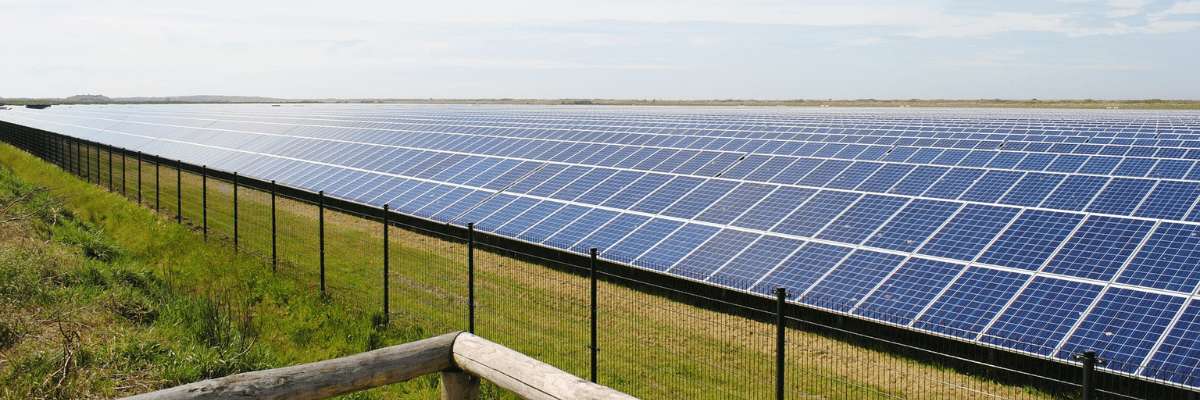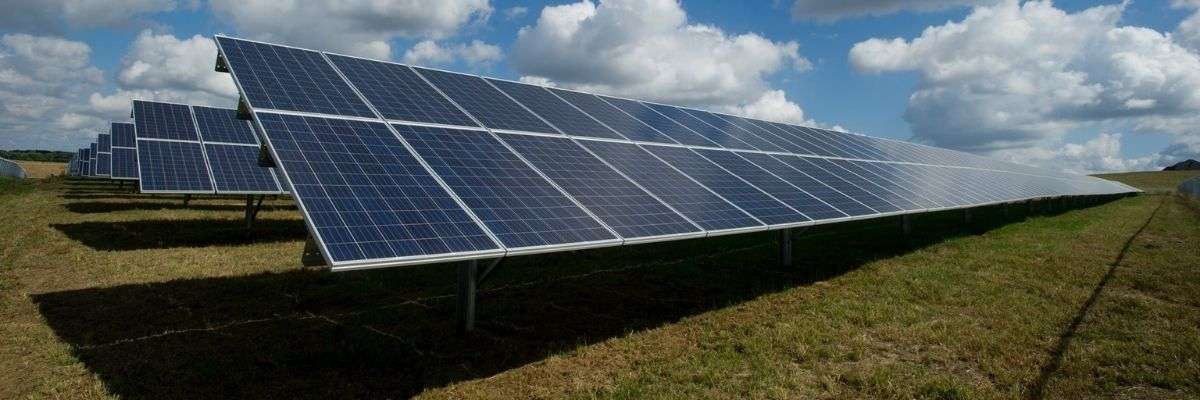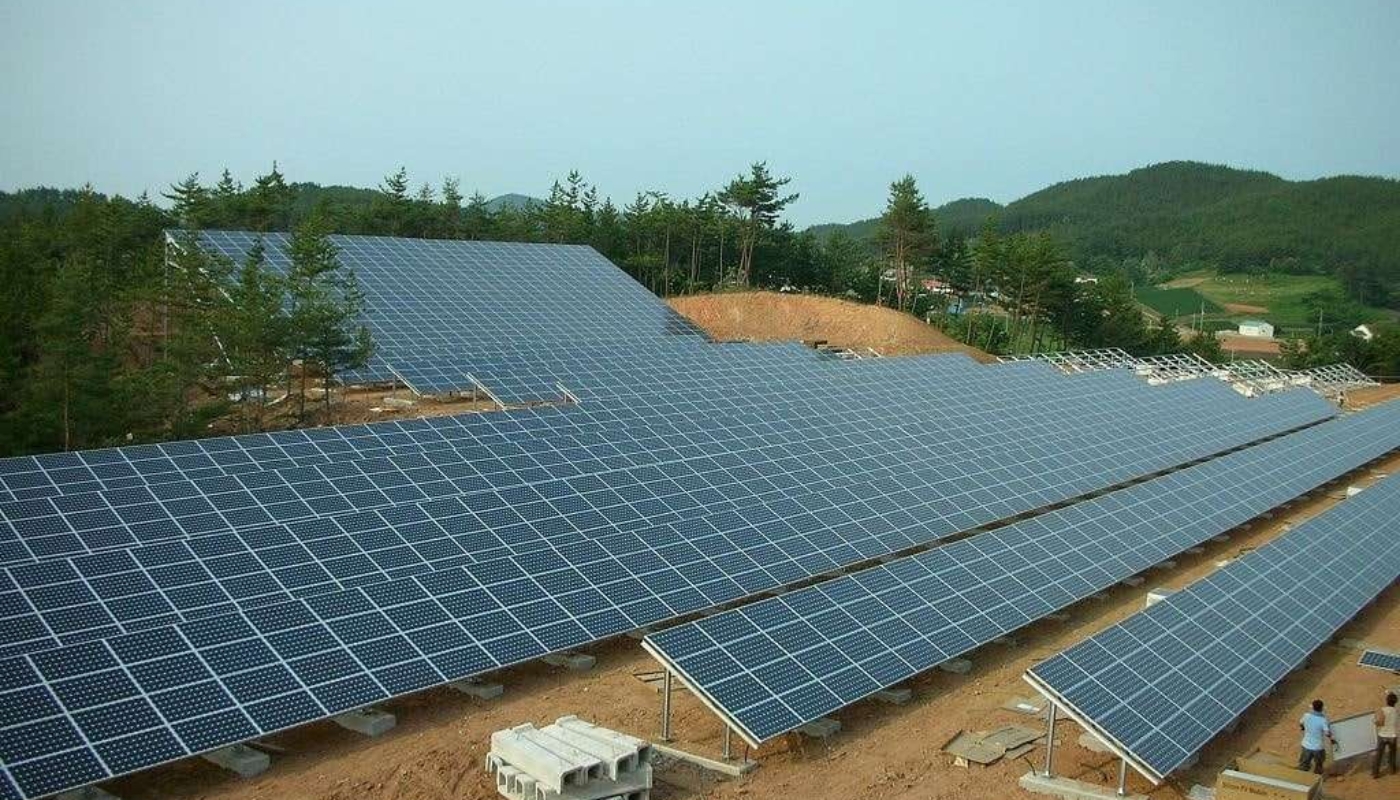As the solar industry has grown exponentially, so too has demand for land to house larger and larger solar arrays. Projects have expanded massively in terms of scale and this has necessitated a push beyond the usual residential and commercial spaces for solar power companies across the country. With increased demand for space and increased investment in the renewable energy sector looking set to continue through 2022 and beyond, there are unique opportunities for landowners to use these developments to their advantage. Solar farms have been a big part of the global solar expansion, but how exactly do they turn a profit for landowners? 
How Much Money Can a Solar Farm Make in 2022?
Firstly, it’s important to note that a number of variables determine the value of the land and, as such, the rates of the solar lease. Below are the key factors that influence the earning potential of a solar farm for the landowner.
#1. Amount of Land
Solar farms are typically large projects and will require a certain number of acres for a developer to be interested. A rough guideline for how many panels the land can hold is 1kW per 100 square feet. The amount of land required varies on a project-by-project basis, and you should also take into account the additional surrounding space that will be required for non-panel solar equipment. As a rule of thumb, developers will be looking for a minimum of 10 acres of clear, flat land, within 2 miles of a substation, and 1,000 feet of three-phase power.
#2. Amount of Sunlight
Obvious as it may be, the land should receive plenty of sunlight annually if it’s going to be viable for a solar farm. Lots of obstructions mean lots of shadows and this isn’t good news for a solar project. If there are some obstructions on your land, don’t give up hope immediately, removal is possible. Of course, removing these obstructions may not be realistic in some cases. Getting rid of a few trees or bushes should be okay—getting rid of a building, maybe not.
#3. Grid Proximity
This is a huge deciding factor for solar developers looking to lease land for a solar farm. If the necessary infrastructure to connect the solar farm to the utility grid isn’t accessible then it’s unlikely that the project will be able to advance. Even seemingly obvious infrastructure, like road access to the land, can be decisive. This kind of infrastructure is expensive and difficult to build, so you definitely stand a better chance if your land is already close to the necessary components. As noted above, the land should be within 1,000 feet of three-phase power and no further than 2 miles from a substation.
#4. Soil Quality
This might sound like a concern for those involved in traditional farming pursuits rather than those developing solar, but it’s an important factor nonetheless. If the land is unstable, difficult to build on, or covered with other debris and obstructions, then this could be a dealbreaker. Clearing the land could cut into a developer’s budget to the point where the project is not viable, and if the land simply can’t be built upon safely then, unfortunately, that’s probably the end of any prospective solar farm project.
If all these factors have been taken into account, and the value of the land has been determined, then it’s time to move on to the negotiation period. The solar developer will draft up a lease agreement to be reviewed by the property owner. This lease will cover all the key points—the monthly rent, the acreage required, and the length of the lease. Take care in this stage of the process and ensure that you’re happy and informed about all aspects of the lease.
What to Ask the Developer When Leasing Your Land for a Solar Farm
It’s important to be fully aware of the implications of a solar land lease and maintain an honest, transparent relationship with the solar developer. Every situation is unique and every landowner will have their own questions and concerns when speaking with a solar developer, but there are some common questions that we recommend asking of every prospective developer.
- Have you worked in this state before?
- Can you provide references for landowners you have worked with in the past?
- Which specific portions of the land are being leased?
- How will the leased portions impact the rest of the land?
- How long is the solar land lease?
- How is rent calculated?
- How are taxes calculated and handled?
- Who will be responsible for maintenance of the leased land?
- Who will hold the rights to the land’s natural resources?
These are just some of the topics we discuss with our clients. For a more detailed exploration of what you should ask a solar developer ahead of leasing your land for a solar farm project, please consult our in-depth article on the subject.
So, How Much Money Can a Solar Farm Make for Landowners?
Well, according to Landmark Dividend, the average solar farm profit per acre lands somewhere between $21,250 and $42,500. Of course, it’s very important to remember that these figures vary wildly on a project-by-project basis, thanks to some of the factors we’ve discussed above. Actual profits can be much lower or, indeed, much higher. Solar farms spanning hundreds of acres can see profits in the hundreds of thousands. 
What is a Solar Land Lease?
A solar land lease is a long-term agreement between a landowner and a developer wherein the developer makes annual payments to the landowner to house a solar farm on their property. The lease term generally lasts somewhere between 20 and 25 years. Typically, these annual payments are made on a per-acre basis, as solar energy generation is consistent and predictable over time. Occasionally, payments are made on a per-megawatt basis, but this is less common. Per-acre payments are more popular because they allow for reliable revenue projection across the lease period. Rent escalation is also a common feature of a solar land lease, with rates generally between 1.5% and 2.5%.
The Benefits of Solar Farms for Landowners
Solar farms are clean, dependable sources of energy which provide a wide range of benefits for both the landowner leasing their property and members of the local community.
- Clean Energy: Solar farms generate green, renewable energy, decreasing the use of fossil fuels and nonrenewable energy sources which produce harmful emissions and damage the environment.
- Guaranteed Income: A solar land lease is a solid investment for landowners as it guarantees a steady source of income for the term outlined in the lease (typically 20 - 25 years.)
- Community Boost: New tax revenue generated by solar farms will directly benefit residents in the community as local governments can direct these funds to improve community services and reduce tax rates.
To learn how much you could make by leasing your land for a solar farm in 2022, reach out to YSG Solar today. Send us an email or call the office at 212.389.9215 to speak to a solar professional. YSG is currently seeking land for solar farm development in the following states:
- Arkansas
- California
- Connecticut
- Delaware
- Illinois
- Maine
- Maryland
- Massachusetts
- Michigan
- Minnesota
- New Jersey
- New York
- Pennsylvania
- Rhode Island
- Vermont
- Virginia
By Shane Croghan
Sources:
https://www.landmarkdividend.com/solar-farm-land-lease-rates/
https://news.energysage.com/solar-farms-start-one/
https://www.theecoexperts.co.uk/cashing-uk-solar-farms
https://www.paradisesolarenergy.com/blog/solar-farms/
Featured Image Source: junilly [CC BY 3.0], via Wikimedia Commons.

